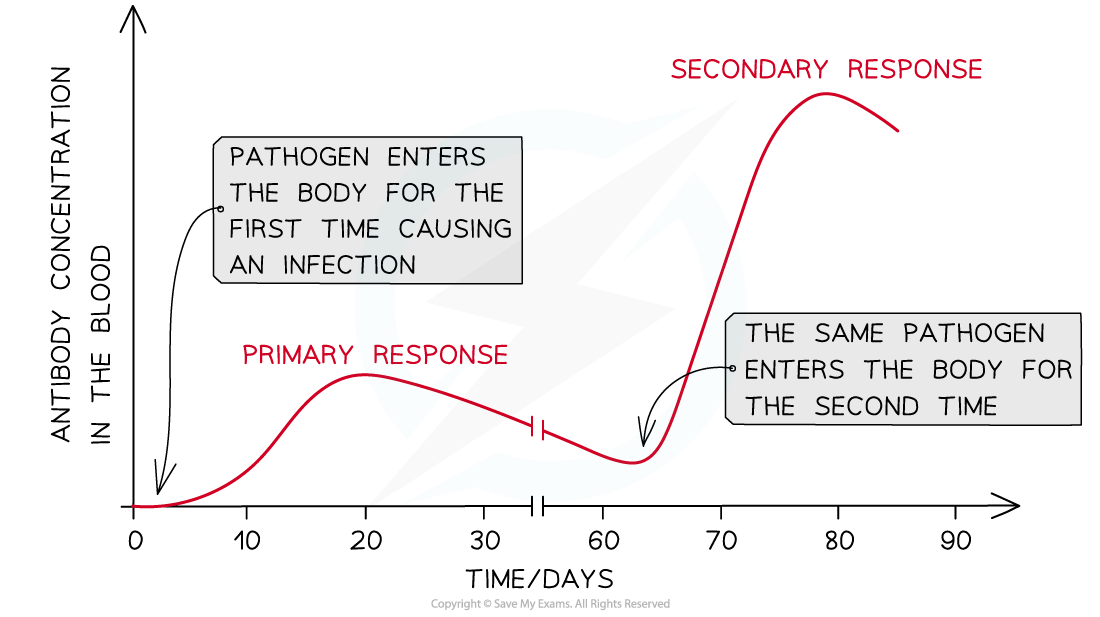Memory Cells & Immunity (Cambridge (CIE) A Level Biology): Revision Note
Exam code: 9700
Memory cells & long-term immunity
Developing immunity
The immune system is activated when a new antigen is encountered
This launches a primary immune response consisting of:
A non-specific immune response
Followed by a specific immune response
The primary response occurs the first time an antigen is encountered by the immune system
Since it is the first time the immune system has encountered the antigen, the numbers of T and B cells with the correct membrane receptors present in the blood will be low
It will take time for the correct lymphocytes to be activated and to divide and for different cell types to develop
It can take several days before plasma cells develop and are able to start producing antibodies against an antigen
This is the reason why an infected person will experience symptoms of the disease the first time they contract it
The primary response produces memory cells which remain in the blood after an infection is over
The presence of memory cells means that a person is said to be immune to the pathogen
Memory cells can remain in the blood for many years, so the immunity gained from a primary response can be long-term
Should the immune system encounter the same antigen again in the future it will launch a secondary immune response which will be much faster and stronger than the primary response
Memory cells are present in larger quantities than the mature lymphocytes at the start of the primary response
This means the correct memory cells are able to detect an antigen, activate and divide by mitosis much more quickly
Antibodies are produced more quickly and in larger concentrations in a secondary response
This will often eliminate the pathogen before the infected person can show symptoms


Unlock more, it's free!
Did this page help you?